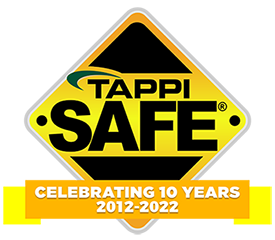 Search
Search
Use the search bar or filters below to find any TAPPI product or publication.
Filters
Content Type
Publications
Level of Knowledge
Committees
Collections
Journal articles

Effects of temperature and oxygen concentration on potassium and chloride enrichment during black-liquor combustion, December 1995 Tappi Journal [95Dec67.pdf]
Effects of temperature and oxygen concentration on potassium and chloride enrichment during black-liquor combustion, TAPPI JOURNAL, December 1995, Vol. 78(12)
Journal articles

Heavy metal analysis of inks: a survey, TAPPI JOURNAL, April 1992, Vol. 75(4)
Heavy metal analysis of inks: a survey, TAPPI JOURNAL, April 1992, Vol. 75(4)
Journal articles

Direct barcode printing on corrugated, TAPPI JOURNAL, April 1993, Vol. 76(4)
Direct barcode printing on corrugated, TAPPI JOURNAL, April 1993, Vol. 76(4)
Journal articles

Treating bleaching effluent for suspended solids and color, TAPPI JOURNAL September 1989
Treating bleaching effluent for suspended solids and color, TAPPI JOURNAL September 1989
Journal articles

Effect of papermaking and coating variables on offset-print quality - part 1: papermaking variables, TAPPI JOURNAL, October 1993, Vol. 76(10)
Effect of papermaking and coating variables on offset-print quality - part 1: papermaking variables, TAPPI JOURNAL, October 1993, Vol. 76(10)
Journal articles

Biodegradation of wood extractives from southern yellow pine by ophiostoma piliferum, TAPPI JOURNAL, January 1994, Vol. 77(1)
Biodegradation of wood extractives from southern yellow pine by ophiostoma piliferum, TAPPI JOURNAL, January 1994, Vol. 77(1)
Journal articles

Shortwood vs. longwood chipping: what impact on chip distribution?, TAPPI JOURNAL, June 1992, Vol. 75(6)
Shortwood vs. longwood chipping: what impact on chip distribution?, TAPPI JOURNAL, June 1992, Vol. 75(6)
Journal articles

Lignin functionalization and the alkaline delignification rate, TAPPI JOURNAL, May 1992, Vol. 75(5)
Lignin functionalization and the alkaline delignification rate, TAPPI JOURNAL, May 1992, Vol. 75(5)
Journal articles

Deinking laser-print paper using ultrasound, TAPPI JOURNAL, March 1994, Vol. 77(3)
Deinking laser-print paper using ultrasound, TAPPI JOURNAL, March 1994, Vol. 77(3)
Magazine articles

Drying: New lime mud dryer kiln helps James Riverâ??s Pennington, AL, mill meet environmental restrictions, December 1995 Tappi Journal [95Dec37.pdf]
New lime mud dryer kiln helps james river's pennington, al, mill meet environmental restrictions, TAPPI JOURNAL, December 1995, Vol. 78(12)






